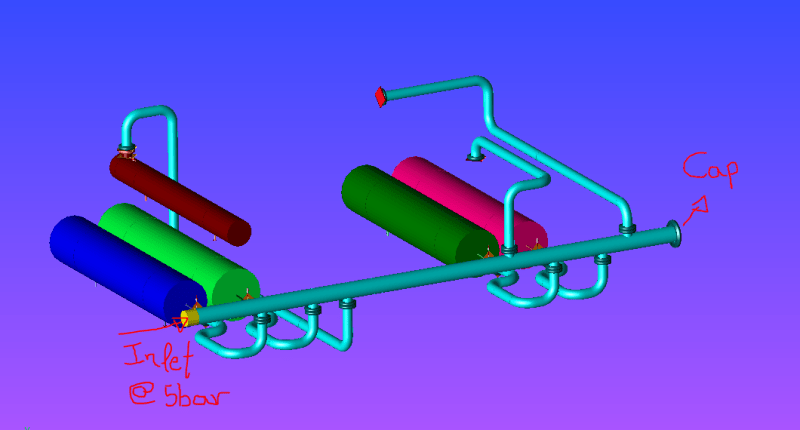Hello to all,
I need your insight regarding the procedure I should follow in order to size a Cooling Water Supply and a Cooling Return Manifold.
The Supply manifold feeds water to 6 Coolers, all located very close to one another. The Vendor of the Coolers has given info regarding how much water is needed (mass flow rate) for the cooling process.
Cooler 1: 245 kg/s
Cooler 2: 104 kg/s
Cooler 3: 107 kg/s
Cooler 4: 100 kg/s
Cooler 5: 80 kg/s
Cooler 6: 433 kg/s
So for each branch that connects the manifold to the respective cooler I have calculated the Volume flow rate (Q1,Q2...,Q6), and considered a maximum velocity of v=2m/s for each branch, in order to calculate their Size.
Considering Qi = v*Ai => Ai = Qi/v
Ai = pi*Di^2/4 => Di = sqrt(4*Qi/v*pi)
The sizes that I have calculated are:
Branch 1: 16"
Branch 2-5: 10"
Branch 6: 20"
Considering all these: please give me feedback regarding the procedure I have followed to Size the branches and considering those sizes are correct, how do I size the CW Header?
Thank you all in advance
I need your insight regarding the procedure I should follow in order to size a Cooling Water Supply and a Cooling Return Manifold.
The Supply manifold feeds water to 6 Coolers, all located very close to one another. The Vendor of the Coolers has given info regarding how much water is needed (mass flow rate) for the cooling process.
Cooler 1: 245 kg/s
Cooler 2: 104 kg/s
Cooler 3: 107 kg/s
Cooler 4: 100 kg/s
Cooler 5: 80 kg/s
Cooler 6: 433 kg/s
So for each branch that connects the manifold to the respective cooler I have calculated the Volume flow rate (Q1,Q2...,Q6), and considered a maximum velocity of v=2m/s for each branch, in order to calculate their Size.
Considering Qi = v*Ai => Ai = Qi/v
Ai = pi*Di^2/4 => Di = sqrt(4*Qi/v*pi)
The sizes that I have calculated are:
Branch 1: 16"
Branch 2-5: 10"
Branch 6: 20"
Considering all these: please give me feedback regarding the procedure I have followed to Size the branches and considering those sizes are correct, how do I size the CW Header?
Thank you all in advance

![[bigsmile] [bigsmile] [bigsmile]](/data/assets/smilies/bigsmile.gif)

![[bigglasses] [bigglasses] [bigglasses]](/data/assets/smilies/bigglasses.gif)